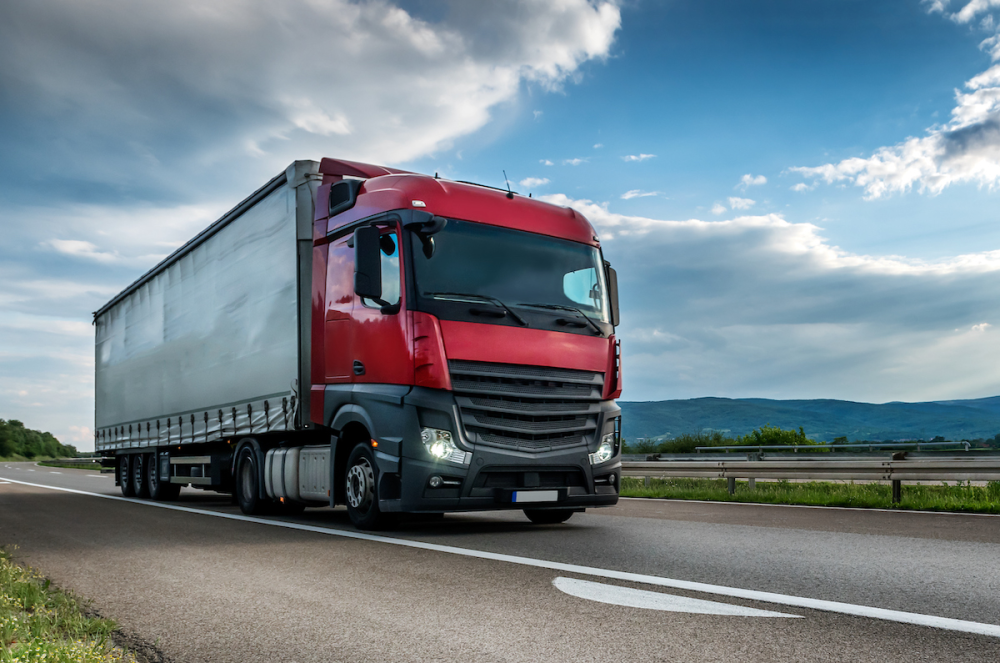TORONTO — The Pembina Institute has released its ZeroX2040 strategy to guide the transition from fossil-fuel powered trucks and buses to ones that produce zero emissions, filling a critically needed gap in the Government of Canada’s effort to shift to clean transportation.
The transportation sector is the leading source of greenhouse gas emissions in Canada after oil and gas, with emissions from medium- and heavy-duty vehicles (MHDVs) threatening to surpass those generated by passenger cars by 2030. The carbon pollution produced by MHDVs has been rising steadily, doubling in output since 1990 and trending toward becoming the largest source of emissions in the transportation sector.
In the absence of a comprehensive federal plan outlining how Canada will meet its 2030 Emissions Reduction Plan targets that 35% of manufacturers’ sales of MHDVs be non-emitting vehicles, increasing to 100% of sales in 2040, the Pembina Institute has published Canada’s Pathway to Net-Zero for Medium- and Heavy-Duty Trucks and Buses.
Analysis in the report shows that the levels of adoption of emission-free trucks and buses are not on track to meet the federal government’s targets nor is the build-out of charging infrastructure close to where it needs to be given the timelines. Should Canada fail to meet its clean transportation commitments, it will be impossible to realize net-zero greenhouse gas emissions by 2050.
The ZeroX2040 strategy provides actionable policy recommendations which Canada can deploy to get on track and in line with its climate goals. Central to a successful transportation transition is for the government to institute sales requirements based on commercial viability rather than a uniform sales target across all MHDV classes. Vehicles that are easiest to electrify, such as buses and most medium-duty vehicles, should be subject to the first wave of targets while sales goals for hard to decarbonize heavy-duty trucks are pushed back.
Should the MHDV sales targets be met in full and on time, MHDV carbon emissions would decline from 35 Mt in 2020 to 10 Mt or less by mid-century. The effect on oil demand in Canada would be profound: In the MHDV sector, under the same scenario, oil demand is projected to decrease by 80% in 2050 relative to 2020 levels.
Quotes
“Canada has a long way to go in the MHDV sector to successfully meet its first carbon emission reduction goal, which is only a few years away. Pembina has focused on this category of vehicles because, unlike passenger cars, carbon pollution from trucks and buses continue to rise. MHDV-generated emissions account for approximately 37% of national transportation-related greenhouse gases, the largest of any sub-sector.
“The ZeroX2040 strategy is intended to help guide the federal government by providing recommendations that respond to the urgency of the situation while taking into consideration the challenges that industry and fleet operators face in switching to electric and hydrogen-fuelled vehicles. There is significant risk that, without a credible roadmap and investment strategy at the federal level, or the policy coordination to accelerate transition at scale, we stand to lose Canada’s zero-emission vehicle supply to other jurisdictions and quite possibly fail to realize a carbon-neutral 2050.”
— Adam Thorn, Director, Transportation, Pembina Institute
Quick facts
- The magnitude of transitioning the transportation sector cannot be overstated. Assuming the federal government’s sales targets are met in full and on time, as many as 180,000 electric trucks and buses will be on the road by 2030 and more than 1 million by 2040.
- The Pembina Institute’s modelling shows that by 2030:
- 70,000 Level 2 (50 kW or higher) private depot chargers for fleets will need to be installed; this will increase to 450,000 by 2050.
- Approximately 6,500 Level 3 (100 kW or higher) public chargers will need to be installed by 2030, increasing to 50,000 by 2050.
- Hydrogen stations for refuelling may need to increase from 2,000 in 2030 to 30,000 in 2050.
- To date, federal investment in charging and refuelling infrastructure covers only 20% of the estimated cost of constructing a national network that can meet the energy needs of the anticipated number of MHDVs on the road by 2030.
- Zero-emission MHDVs offer thousands of dollars in savings a year in fuel and maintenance costs. With government rebates and credits earned through the Clean Fuel Regulations, the total cost of ownership of zero-emission MHDVs (particularly buses and medium-duty vehicles) is expected to reach parity with diesel vehicles by 2030.
- Zero-emission MHDVs come with health benefits. According to Health Canada, traffic-related air pollution contributes to 1,200 premature deaths in Canada yearly. A 2022 Health Canada report attributed 63% of those deaths to exhaust from MHDVs.
[30]
Contact
Victoria Foote
Communications Advisor, Pembina Institute
647-290-9384
Background
Report: Power Boost: Electric school buses and the revitalization of small- and medium-size businesses in Ontario’s auto industry
Report: Building a zero-emission goods-movement system: Opportunities to strengthen Canada’s ZEV freight sector
Report: A guide to electrifying urban delivery fleets in Canadian cities: Why and how last-mile delivery companies should make the switch to electric vehicles
Fact Sheets: Decarbonizing medium- and heavy-duty vehicles




